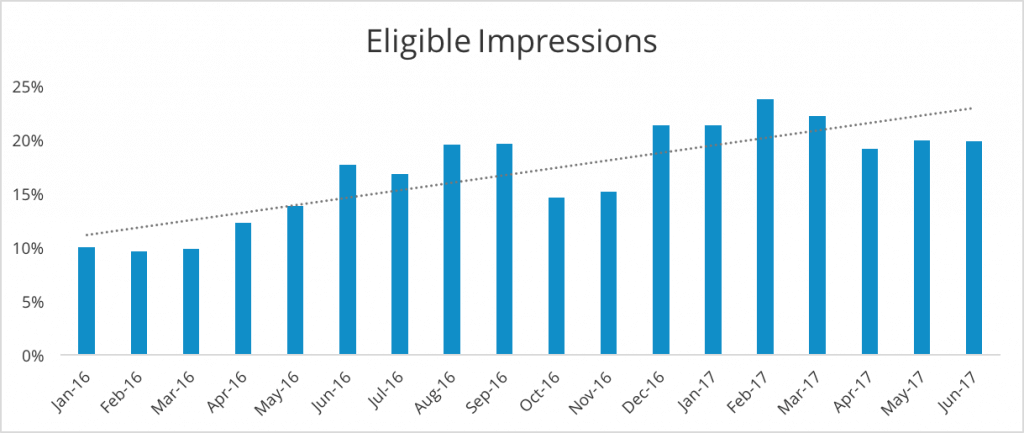
When booking a hotel, 61% of travelers consider the room’s rate to be the most important consideration factor.
NB: This is an article by Koddi
Metasearch publishers like Google continue to focus on features that help users find the best price on a hotel room. We recently noticed that Google’s price trends feature (which has existed on desktop and tablet for years) is available on mobile screens. This addition creates another resource for Google consumers to monitor pricing trends of hotels, now directly from their smartphones.
Price Trends on Mobile
To access the feature, start by selecting a single hotel in the Google Hotel Ads placement. Scrolling down past the advertised rates, a section labeled ‘price trends’ will come into view. The price trends feature displays a graph showing the low to high-end rate offerings by day of the week. When users interact with the bar graph, the date updates and Google shows new prices and sellers.

Weekly vs Monthly
Toggling between the weekly and monthly views, users get a look at the best time to book. The monthly feature is especially useful for leisure travelers who have flexibility with their travel dates.

How does this affect mobile advertisers?
Since leisure travelers have some more flexibility with their travel dates, their check-in date can be influenced by pricing. Before the price trends feature, these users would need to conduct multiple searches and manually track price changes. This process is particularly time-consuming when performed on a mobile device. The “price trends” feature simplifies that process for users and reduces friction.
This feature does have the potential to impact the way advertisers approach bidding on mobile. If users actively engage with the price trends tool, then date-based multipliers like the day of week multiplier will become a bigger focus for advertisers. To fully explain this point of view, some context is required. Google is one of the only metasearch engines that does not require users to supply a date before searching; it instead uses a default date. The default date can vary based on the user’s location, device, and when they are searching. The majority of queries conducted on Google Hotel Ads leverages the default date. There has, however, been a shift in user behavior. At the beginning of 2016, only 10% of eligible impressions were from users who selected a date. In 2017, we have seen that number nearly double with as many as 23% of eligible impressions coming from select date queries.

Multiple factors have likely attributed to this trend including dynamic default dates and additional placements. Tools like price trends analysis have the potential to further this trend. As users become more likely to engage with date selection features, advertisers will need to optimize relevant date multipliers. Multipliers, such as the day of week multiplier, enable advertisers to prioritize high converting check-in dates.
We’re looking forward to exploring the future strides Google makes as it gives consumers a Hotel Ads experience tailored to pricing. It will be exciting to see how these changes influence booking behavior as Google continues to differentiate itself from other metasearch publishers.




